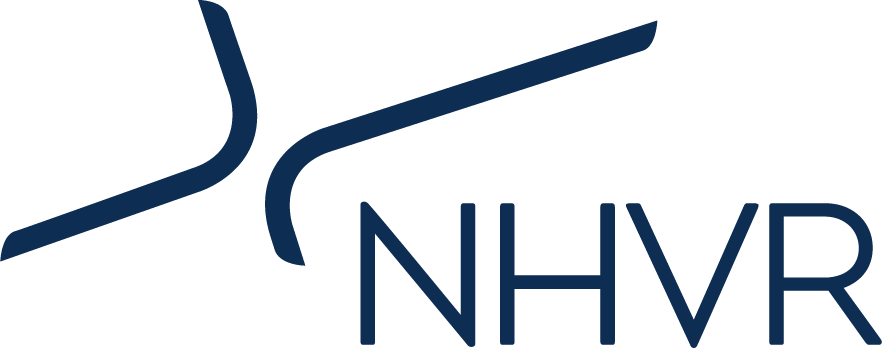Under the Heavy Vehicle National Law (HVNL), it is your duty to comply with loading requirements. Learn about load restraint, loading performance standards and other useful information by downloading the Load Restraint Guide.
On this page
- Loading requirements
- Get the Load Restraint Guide
- Loading Guides
- Load Restraint Guide for light vehicles
- Chain of Responsibility (CoR) requirements and load restraint
Loading requirements
The load on a heavy vehicle MUST:
- be secured so it is unlikely to fall or be dislodged
- be restrained using an appropriate restraint method
- be placed, secured or restrained in a way that meets the loading performance standards listed in Schedule 7 of the Heavy Vehicle (Mass, Dimension and Loading) National Regulation.
The load on a heavy vehicle MUST NOT:
- be placed in a way that makes the vehicle unstable or unsafe.
Why are loading requirements important?
To maintain safety.
Poorly loaded vehicles or inadequately restrained loads can cause injuries and fatalities when:
- objects fall from vehicles onto other vehicles or pedestrians
- drivers swerve to avoid falling or fallen items from vehicles
- spillage on roads from vehicles causes other vehicles to skid and lose control
- loads crash into the vehicle’s cabin during emergency braking
- vehicles rollover when loads shift during cornering.
How do I achieve safe loading?
To ensure a vehicle is safely loaded:
- choose a suitable vehicle for the load type and size
- determine the position of the load on the vehicle to maintain adequate stability, steering and braking
- design a load restraint system that meets the loading performance standards listed in Schedule 7 of the Heavy Vehicle (Mass, Dimension and Loading) National Regulation.
- ensure appropriate and sufficient load restraint equipment is available to implement the load restraint system
- ensure load restraint equipment is in serviceable condition and appropriately rated for the task
- ensure a comprehensive and detailed loading plan is provided to workers responsible for the tasks of vehicle loading.
Assess your loading requirements
When evaluating the loading of a vehicle and the load restraint system used, ask yourself:
- is the position of the load making the vehicle unsafe or unstable?
- is the load restrained so it’s unlikely to fall or be dislodged from the vehicle?
- is the load restraint method used appropriate for the type of load?
- does the load restraint system meet the loading performance standards?
Get the Load Restraint Guide
Load Restraint Guide 2018 (PDF, 62MB)
The guide provides basic safety principles when designing a load restraint system for your heavy vehicle. Purchase the Load Restraint Guide 2018 through Canprint Information Services in either A4 or a convenient glovebox A5 size.
The guide includes technical information, detailed diagrams and worked examples to help you determine the restraint required for your heavy vehicle load. Examples were calculated using engineering principles that meet loading performance standards and reflect the latest heavy vehicle technology and appropriate load restraint methods.
It describes:
- the process to follow when loading a vehicle and designing load restraint systems for common loading scenarios
- appropriate load restraint methods for different load types
- the engineering principles found in load restraint systems written using plain language.
Note: The worked examples provided in the guide are for simple loading scenarios. If your load requires a complex restraint method, seek assistance from a qualified person.
Is the Load Restraint Guide 2018 a legal document?
No. The Load Restraint Guide 2018 is an information guide only. It reflects best practice load restraint systems to meet loading requirements and loading performance standards. It is not a legal document.
Loading Guides
These loading guides provide tips and tricks to help industry better understand the principles of good load restraint. The guides have been designed for parties in the CoR to print out and display in their workplace to increase awareness, or to be placed in loading manuals as a quick reference.
For more in-depth information on the principles covered by these guides please view the Load Restraint Guide 2018.
| Title | Topic | Published |
|---|---|---|
| Load Distribution | The position of a load has a significant impact on the safety of a heavy vehicle as it impacts the vehicle’s stability, steering dynamics, braking and weight distribution. | 13 Feb 2024 |
| Intermediate Bulk Containers | Intermediate bulk containers (IBCs) are industrial grade reusable containers engineered for the mass handling, transport, and storage of liquids, semi-solids, pastes, or solids. | 13 Feb 2024 |
| Loading Plans | Loading plans describe how loads are packed, where loads should be placed on the vehicle and the minimum requirements to safely restrain the load for transport by road. | 13 Feb 2024 |
| Performance Standards | Loading performance standards are the forces that the load restraint system must be able to withstand in each direction. | 6 Feb 2024 |
| Lashing Angle | Lashing angle is the angle between the lashing and the vehicle’s loading deck. | 18 Dec 2023 |
| Pre-tension | Pre-tension is the force in the lashing provided by a mechanical tensioner. | 18 Dec 2023 |
| Friction | Friction is the force that makes it difficult for one object to slide along the surface of another. | 18 Dec 2023 |
| Blocking | Blocking is where the vehicle body structure or another rated attachment is used to prevent a load from moving forward, reward or sideways. | 23 Nov 2023 |
| Dunnage | Dunnage is the packing placed under and between parts of the load. | 12 Jul 2023 |
| Headboards | A headboard is a barrier between the back of the cabin and the cargo area; or fitted to the front of a trailer. | 12 Sep 2023 |
| Side Curtains | Side curtains are flexible sheets of material, usually made of durable vinyl, fitted to the sides of a truck or trailer. | 12 Sep 2023 |
| Side Gates | Side gates are permanent or removable vertical frames used at the sides of a vehicle's loading deck to contain its load. | 12 Sep 2023 |
Load restraint for light vehicles
The National Transport Commission has also published a load restraint guide for light vehicles. A light vehicle is any car, ute, van, truck or trailer with a gross vehicle mass of 4.5 tonnes or less.
- Download the Load Restraint Guide for light vehicles 2018
There is no hard copy version of the light vehicle load restraint guide.
Chain of Responsibility (CoR) requirements and load restraint
Parties in the COR have a duty to eliminate or minimise risks associated with the transport activities they influence or control, so far as is reasonably practicable. The risks that unrestrained loads present to other road users are well known.
Heavy vehicle operators and loaders must ensure that persons who load heavy vehicles are properly trained and equipped to secure loads. They may do so by seeking advice about load restraint systems from a suitably qualified person and following their advice about the design of any system.
Other COR parties contribute to safe loading by sharing information about the mass and dimensions of loads, providing safe loading plans, monitoring how well loads are secured, and addressing issues that arise.
The Master Industry Code of Practice provides further information about the elimination or minimisation of risks associated with transport activities.
Further information is available on CoR and the Primary Duty.
FAQs
How do I restrain my particular load?
The Heavy Vehicle National Law (HVNL) does not specify how to restrain specific types of loads. It only describes the outcome a load restraint system must achieve. This means you have some flexibility when designing your load restraint system, as long as it meets the loading performance standards listed in Schedule 7 of the Heavy Vehicle (Mass, Dimension and Loading) National Regulation.
Consult the Load Restraint Guide 2018 to ensure your system meets the loading performance standards if you are still unsure, you can seek assistance from a qualified person or alternatively seek appropriate training.
Does the NHVR provide engineering advice on load restraint systems?
No. We provide guidance on how to use the Load Restraint Guide 2018 and what the loading performance standards requirements are, but we do not provide specific information for the creation of load restraint systems.
Where can I get load restraint system advice?
In addition to consulting the Load Restraint Guide 2018, you may choose to seek professional advice from a qualified person to design a compliant load restraint system that caters for your specific needs.
A qualified person is a person who is a professional engineer registered with a professional registration body.
Where can I obtain load restraint system design training?
Training is available from your employer or an industry training provider. A Google search will identify some training providers.
Is there a minimum standard for load restraint equipment (e.g. straps and chains)?
The HVNL does not specify a minimum standard for equipment used in load restraint systems. Know the operating capacity for any equipment you use to restrain a load, as this will assist you in determining the equipment’s suitability for the task.
What loading requirements apply in the Northern Territory and Western Australia?
Information on loading requirements in the Northern Territory and Western Australia can be found at:

 Accessibility tools
Accessibility tools


